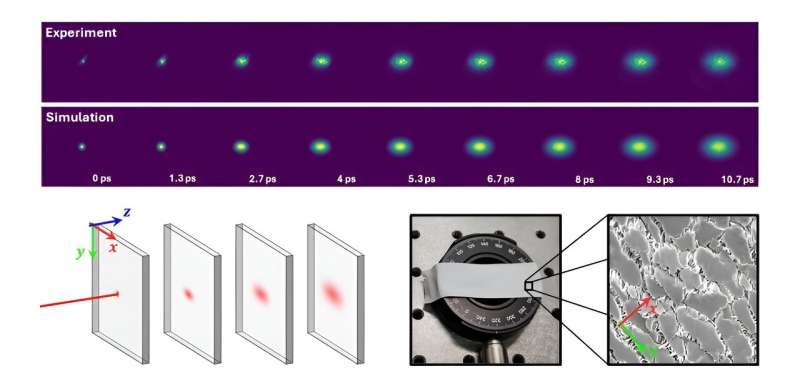Researchers have developed a new technique that could transform our understanding of how light behaves in materials with complex structures, known as anisotropic materials. This innovative approach combines advanced simulations and experimental measurements, offering unprecedented insights into the optical properties of materials like Teflon tape and paper.

Shedding Light on Anisotropy
The way light travels and is scattered by material may be one of the most mathematical concepts that comes into daily practice, from medical imaging to manufacturing. But a lot of materials are anisotropic, meaning they scatter light differently depending on the direction of the waves.
This complexity means that in the past, people have had problems with being able to measure and model properties of anisotropic materials as good. Unfortunately, researchers often simplify the problem by assuming isotropy of the materials, which resulted in their findings having too much error.
A group of scientists at the European Laboratory for Nonlinear Spectroscopy (LENS) has now succeeded in developing a technique that can fully describe the complexity of light-wave propagation, so revolutionising our ability to shape and detect light. However, using advanced Monte Carlo simulations in conjunction with time-domain transmittance measurements, they have been able to extract the full scattering tensor coefficients of two prevalent anisotropic systems: Teflon tape and paper.
Detailed Study of Anisotropic Materials
Practically speaking, we chose ubiquitous industrial Teflon tape and structural anisotropic paper (whose structure stems from aligned cellulose fibers). The light signal was measured for these materials induced by ultrashort pulses of light using a transient imaging technique to determine how the pattern of light evolves over time.
Together with a recently developed simulation method aware of anisotropy, this new data clearly mapped how the light prefers to scatter in these materials in different directions. In both Teflon tape and paper, the study revealed pronounced anisotropy in light diffusion along different directions with results that enabled them to achieve full scattering tensor coefficients for their first time by the researchers.
Never before had simulations predicted that much detail. The implications of these results are far reaching, suggesting that anisotropy must be properly accounted for in material investigations as ignoring it can lead to orders-of-magnitude errors.
Conclusion
The researchers perfected a new technique that provides greater precision when characterizing materials with complex structures — including biological tissues. This will have applications in the study of light scattering for some diagnostic techniques, and so is expected to be relevant also to medical imaging and material science practices. Understanding and analyzing the optical behavior of anisotropic materials allows for improved control over applications in a variety of scientific and industrial fields.
